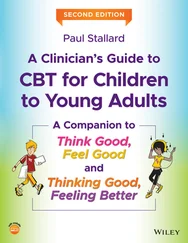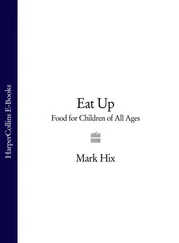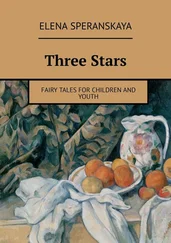As a health professional you are accountable for using the most up‐to‐date evidence base for your practice. This means ensuring that you only use the current version of the BNFc which relates to your practice area and care of (CYP). The BNF also contains information on drugs licensed for use in children; however, the comprehensive literature relating more specifically to CYP will be found in the BNFc. A BNF will always be a good source for pharmaceutical information and can easily be used in the absence of a current BNFc, but should be used with caution.
You should consider:
That previous paper versions may have outdated information or even sections that have been removed
The implications of advising CYP and their families on medication regimens if the information source you have chosen is out of date. What are the potential risks to the CYP? What could this mean for your practice and accountability?
At first glance the BNFc can be overwhelming; however, with a little practice it quickly becomes a fast and reliable way to gather information for yourself, patients and those you work with.
The current BNFc print versions are organised into four main sections:
Front matter
Chapters
Appendices
Back matter Table 2.1 Text format and information purpose.TEXT FORMATINFORMATION USEBlackInformation on treatment summary and therapeutic usesColour blockInformation on drug specific information
Careful attention should be paid to the font colour (see Table 2.1), images and symbols used in the BNF as these all convey pertinent information
The front matter of the BNFc gives quick access to information such as how to use the BNFc, the layout of information throughout chapters and significant changes that have taken place since the previous edition. General guidance is given on prescribing and the requirements of legal prescriptions, both handwritten and computer‐issued. Special attention is paid to controlled drugs, alongside adverse reactions to drugs and offers guidance on recognition and reporting.
A general overview of specific patient‐centred considerations is given in relation to prescribing in hepatic (liver) and renal (kidney) failure as well considerations for pregnancy, breast‐feeding and palliative care. Each section has a broad overview followed by specific considerations. For example, in prescribing for palliative care, specific information is provided on pain management, symptom control and continuous subcutaneous infusions.
The main body of the BNFc is divided into systems chapters (i.e. gastrointestinal system) and follows the same structure.
Some drugs and chapters have a class monograph . A class monograph includes information that is common to all drugs within a particular class. It is important to read these in conjunction with the drug monograph which gives information relating to that drug in particular. Class monographs are identified by a flag in a circle  (Source: BMJ Publishing Group Ltd.). If the drug you are seeking advice on has an associated class monograph it will be indicated by a tab with a flag symbol and the page number where the class monograph can be found
(Source: BMJ Publishing Group Ltd.). If the drug you are seeking advice on has an associated class monograph it will be indicated by a tab with a flag symbol and the page number where the class monograph can be found  (Source: BMJ Publishing Group Ltd.).
(Source: BMJ Publishing Group Ltd.).
Access a copy of the current BNFc and open the gastrointestinal system chapter. It starts with a clear contents section indicating what can be found in the chapter on the gastrointestinal system and is followed by information on the associated diseases, conditions and disorders, treatment summaries and individual medication information. Focusing on constipation, find and read the description of the condition and its associated overview and management.
The classification of the individual drug is indicated in blue (e.g. Laxatives – Bulk‐forming Laxatives) with the drug name and drug monograph sited below. The drug monograph provides comprehensive information on the drug all in one concise section. Pertinent guidance is offered relating to drug action, indications and dose, adjustments and interactions, safety information, contraindications, signposting to the correct section of interactions, side effects and medicinal forms.
Drug‐class monographs have been created by the publishers of the BNF. Where there is common information relating to a class of drugs, the shared properties are contained in a drug‐class monograph (Hand and Pryor, 2021). Drug‐class monographs are emphasised by a circled flag symbol next to the title of the drug‐class monograph The corresponding individual drug monographs generally follow the drug‐class monograph, these are highlighted by a non‐circled flag symbol (see Figure 2.1)

Figure 2.1 Drug‐class monographs.
Source: BMJ Publishing Group Ltd.
In the example in Figure 2.1, the monograph depicted for atenolol will display a flag; this indicates that the drug‐class monograph for Beta‐adrenoceptor blockers (systemic) should be consulted in tandem.
Within the drug monograph the following are also highlighted:
Drug classification – may be based on pharmaceutical class, for example opioids, but may also be related to the use of the drug, such as cough suppressant
Indication and dose – all the information that relates to an individual drug, for example, drug action, indication and dose, contraindications, cautions, interactions, side effects, allergies and so on
Specific preparation name – if the dose varies with a specific preparation or formulation it appears under a heading of the preparation name
Evidence grading – This reflects the strength of recommendations applied
Legal categories – Applied to those preparations that are available only on a prescription issued by an appropriate practitioner and preparations that are subject to the prescription requirements of the Misuse of Drugs Act
The information found in the medicinal forms section of the monograph is vital for healthcare professionals to be able to understand the various routes of administration, supply, and dose schedule considerations. Alongside this, the medicinal forms section shows the legal category of the drug indicated by a specific category abbreviation or controlled drug schedule abbreviation. Table 2.2demonstrates the abbreviations and their meanings. In practice, this information may make the difference between generating a prescription or giving health advice. The variance between categories may be determined by the drug itself, dose and amount to be dispensed (see Box 2.1).
Table 2.2 Abbreviations of medication categories.
| CATEGORY |
DESCRIPTION |
P – pharmacy‐only medicine  |
A product that may only be sold in a registered pharmacy under the supervision of a registered pharmacist e.g. bisacodyl suppositories |
PoM – prescription‐only medicine  |
A product that may only be sold or supplied to the public on a practitioner’s prescription, e.g. warfarin tablets |
GSL – general sales list  |
A product that may be sold from a retail outlet without the supervision of a registered pharmacist, e.g. NiQuitin 2mg medicated chewing gum |
CD – controlled drug       |
A product that is controlled by the Misuse of Drugs Act 1971 and is listed in the Misuse of Drugs Regulations 2001 as amended, which may be subject to specific restrictions relating to supply, prescription, storage, record‐keeping, labelling and destruction, e.g. morphine sulfate (modified‐release tablets) 60mg oral tablet |
| ACBS – Advisory Committee on Borderline Substances |
A product that may be prescribed for the treatment of certain conditions. Prescriptions for these products must be endorsed ‘ACBS’ e.g. gluten‐free bread |
Box 2.1 Paracetamol Sales
Читать дальше

 (Source: BMJ Publishing Group Ltd.). If the drug you are seeking advice on has an associated class monograph it will be indicated by a tab with a flag symbol and the page number where the class monograph can be found
(Source: BMJ Publishing Group Ltd.). If the drug you are seeking advice on has an associated class monograph it will be indicated by a tab with a flag symbol and the page number where the class monograph can be found  (Source: BMJ Publishing Group Ltd.).
(Source: BMJ Publishing Group Ltd.).



















